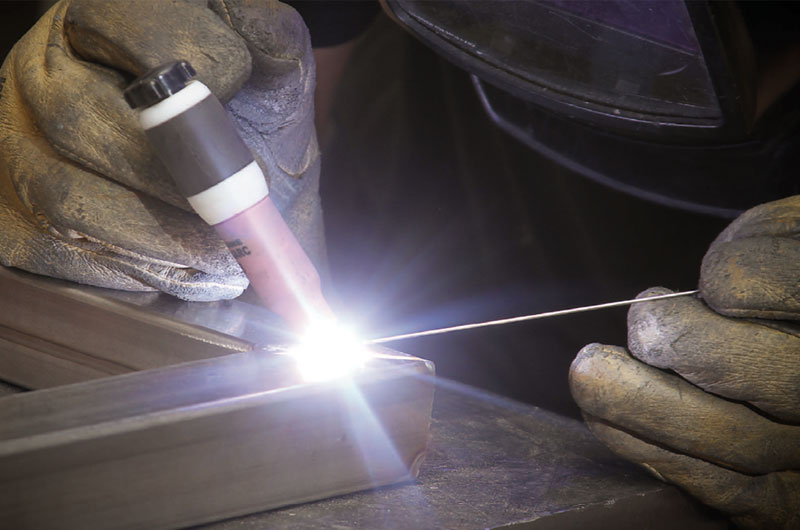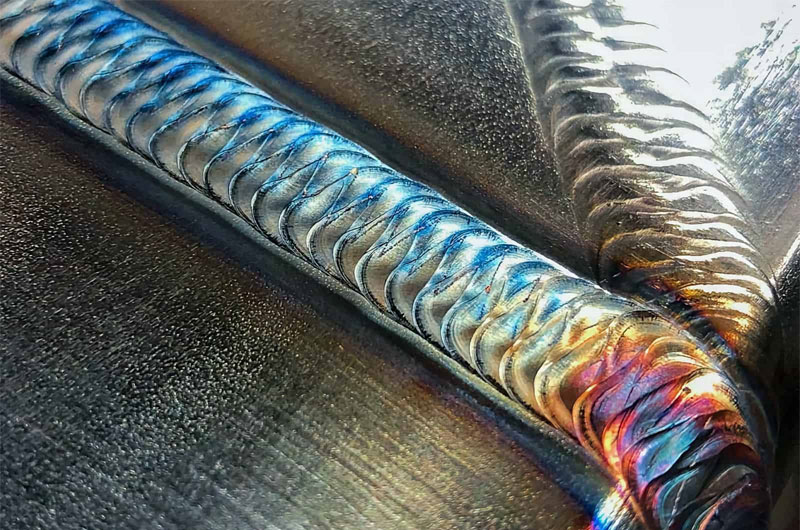Tungsten Inert Gas (TIG) welding, also known as Gas Tungsten Arc Welding (GTAW), is widely appreciated for producing high-quality, precise, and aesthetically pleasing welds.
However, achieving a uniform, visually appealing weld bead consistently requires skill, attention to detail, and proper technique.
Whether you are a beginner or an experienced welder, improving weld appearance and uniformity in TIG welding is an essential goal for both structural integrity and cosmetic reasons.
Here’s a comprehensive guide on how to enhance your TIG weld aesthetics and consistency.
1. Master Proper Torch Angle and Positioning
The angle and positioning of your TIG torch significantly impact the weld bead shape and penetration.
- Torch Angle: Hold the torch at approximately 10 to 15 degrees from vertical, pointing in the direction of travel. This helps ensure proper shielding gas coverage and arc stability.
- Distance: Maintain a consistent arc length (distance between the tungsten electrode and workpiece), ideally about 1.5 times the diameter of the tungsten electrode tip. Too long an arc causes oxidation and irregular bead appearance; too short risks tungsten contamination.
2. Select the Correct Tungsten Electrode and Preparation
Choosing and preparing the tungsten electrode properly affects arc stability and bead quality.
- Electrode Type: Use the correct tungsten type for your material and current type (e.g., 2% thoriated or lanthanated for DC welding, pure tungsten or zirconiated for AC aluminum welding).
- Tip Shape: Grind the tungsten to a clean, sharp point for DC welding to concentrate the arc, or a balled tip for AC aluminum to improve cleaning action.
- Cleanliness: Always keep the tungsten clean and free of contaminants to avoid spatter and inconsistent arc behavior.
3. Optimize Welding Parameters
Correct parameters help you maintain a steady arc and produce a uniform bead.
- Current Settings: Adjust amperage according to material thickness. Too high causes burn-through and uneven beads; too low leads to poor fusion.
- Gas Flow Rate: Use an appropriate shielding gas flow (typically 15-20 CFH for argon) to prevent oxidation without causing turbulence.
- Travel Speed: Maintain a consistent travel speed that balances penetration and bead width. Too slow causes excessive buildup and overheating; too fast creates thin, irregular beads.
4. Maintain a Steady and Controlled Travel Technique

A smooth and rhythmic welding motion results in an even bead appearance.
- Motion: Use consistent hand movements such as a straight push or a slight circular (weave) pattern for wider beads, depending on the joint.
- Filler Rod Feeding: Add filler material steadily and consistently, feeding it into the leading edge of the weld pool without disturbing arc stability.
- Body Position: Stabilize your body and arm to reduce shakiness. Use rests or supports if necessary.
5. Use Proper Shielding Gas and Gas Lens
Protecting the weld pool from contamination is critical.
- Shielding Gas Purity: Use high-purity argon or argon mixtures recommended for your application.
- Gas Lens: Employ a gas lens on the TIG torch to improve gas coverage and reduce turbulence, resulting in a cleaner, more uniform weld.
6. Prepare and Clean the Base Material Thoroughly
Surface contaminants can ruin weld appearance.
- Remove oils, dirt, rust, paint, or mill scale before welding using solvents, wire brushing, or grinding.
- Use a stainless-steel wire brush reserved exclusively for aluminum when removing its oxide layer, ensuring no cross-contamination occurs.
7. Practice Consistent Heat Input Control
Controlling heat input prevents warping and uneven bead width.
- Avoid overheating thin sections by using pulsed TIG if available or adjusting amperage.
- Use intermittent welding or tack welds to reduce heat buildup in long joints.
8. Post-Weld Cleaning and Finishing
Even the best weld can look poor if post-weld finishing is neglected.
- Remove any oxidation or discoloration using stainless steel brushes, chemical pickling, or polishing.
- For stainless steel, consider passivation to restore corrosion resistance and appearance.

